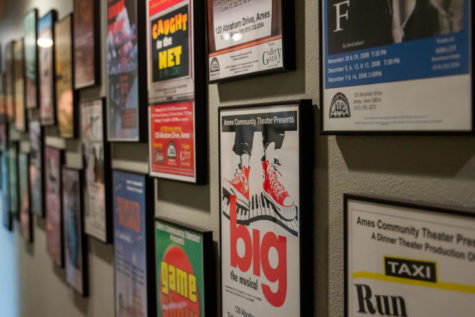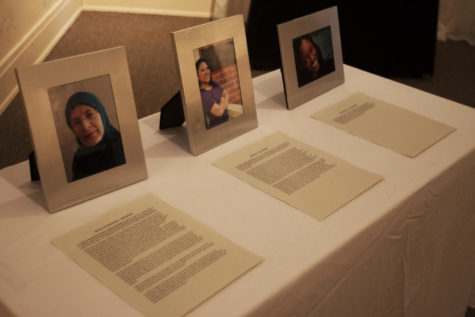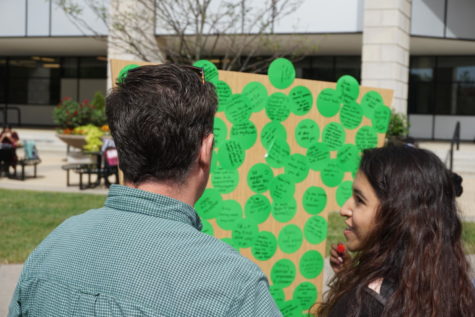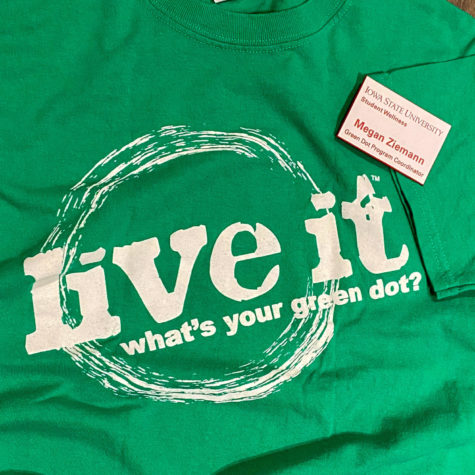Studying body language can help students with job interviews
February 2, 2011
Job interviews can cause a lot of stress. However, knowing the basics of body language can help alleviate this anxiety.
Dawn Sweet, a visiting professor of psychology and communications, said studying a person’s bodily behavior can help interviewees know what the interviewer is feeling.
People have certain “hotspots” on their faces that show if they are experiencing one of the seven common emotions: happiness, sadness, anger, contempt, disgust, fear and surprise, Sweet said.
“Each of these seven emotions has a unique and distinct physiological footprint,” Sweet said. “The face has 44 muscles and these 44 muscles can form upwards of 10,000 combinations, but there are only certain muscle combinations that we’re interested in because they correlate with some sort of emotional response.”
Happiness, for example, can be deciphered through a person’s smile, Sweet said. She described how there are two different types of smiles, a genuine smile and a social smile.
“With a genuine smile, what we see is the engagement of the orbicularis oculi, or the set of muscles that go around the eye,” Sweet said. “We also see the lip corners being pulled up.”
Social smiles, on the other hand, do not cause the muscles around the eyes to engage or the corners of the mouth to become upturned.
“What people do, because we live in a polite society, is engage in masking behaviors,” Sweet said.
Masking behaviors, like social smiles, occur when a person tries to hide some sort of emotion. Sweet recommended looking for disconnect between what a person says and how that person acts when saying it.
“If someone is saying, ‘It was very nice to meet you,’ and their head is nodding and they’re giving you the nice, genuine smile, I would be more apt to believe that person than if I got the polite smile, and when they say ‘It was nice to meet you,’ they shake their head,” Sweet said.
She also discussed how people should look for shrugging. When a person shrugs, it is often an indicator of uncertainty.
“Always stress the shrug,” Sweet said. “When a person is saying, ‘It was nice to meet you,’ and they are shrugging, I would tune into the shrug more than the head nodding up and down.”
Beyond looking for masking behavior, Sweet recommended looking for changes in behavior.
“The trick is to look for baseline behaviors and then to look for changes,” Sweet said. “If a person is showing excitement over something you’re saying, and then you say something and their voice levels off a bit — just those subtle changes.”
When talking about changes in behavior, Sweet also described a phenomenon known as interactional synchrony.
“When you’re talking to someone for a long period of time, your behaviors begin to sync,” Sweet said. “When you have that syncing of behaviors, that’s typically a positive sign.”
Synchronization often occurs on an unconscious level, Sweet said. However, she said consciously synchronizing someone’s behavior can sometimes be used to help with conversations.
“There’s an ethical line here, but I would say [to synchronize someone’s behavior] get a sense for how the person is behaving, and if you notice that this person has his or her legs crossed, cross your legs in a similar manner,” Sweet said. “But, don’t be obvious about it.”
Although body language is often hard to read, knowing the basics of body language can help people decipher how others are feeling. In regard to job interviews, studying body language can help the interviewee gauge and react to how the interviewer feels.
“Just be observant,” Sweet said. “We can learn a lot from behavior.”
















